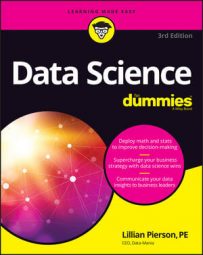If you want to write a story that appeals to your target readership, you must consider who comprises that readership and the most pressing needs and concerns of those people.
Who made the data
The answer to the question "Who made your data?" is the most fundamental and important answer to any of the five W questions of journalism — the who, what, when, where, and why. No story can pass the litmus test unless it's been built upon highly credible sources. If your sources aren't valid and accurate, you could spend countless hours producing what, in the end, amounts to a worthless story.You must be scrupulous about knowing who made your data because you need to be able to validate those sources' accuracy and credibility. You definitely don't want to go public with a story you generated from noncredible sources, because if anyone questions the story's validity, you have no ground on which to stand.
News is only as good as its source, so protect your own credibility by reporting on data from only credible sources. Also, it's important to use as many relevant data sources as can be acquired, to avoid bias or accusations of cherry-picking.
If you want to create a meaningful, credible data-driven story that attracts a maximum amount of attention from your audience, you can use the power and clout of reputable data sources to make your stories and headlines that much more compelling. In any type of data journalism piece you publish, it's critical that you disclose your data sources. You don't have to provide a live web link back to those sources, but you should at least make a statement about where you found your information, in case people want to investigate further on their own.Who comprises the audience
Research your target audience and get to know their interests, reading preferences, and even their aesthetics preferences (for choosing the best images to include in your story) before planning your story so that you can craft something that's of maximum interest and usefulness to them. You can present the same interesting, high-quality story in countless different lights — with some lights beaming in a much more compelling way than others.To present your story in a way that most attracts readers' attention, spend some serious time researching your target audience and evaluating what presentation styles work well with readers of that group. One way to begin getting to know your readers is to gather data on stories that have performed well with that audience in the recent past.
If you search social bookmarking sites — StumbleUpon, for example, or Digg or Delicious — or if you just mine some Twitter data, you can quickly generate a list of headlines that perform well with your target audience. Just get in there and start searching for content that's based on the same topic as that of your own. Identify what headlines seem to have the best performance — the highest engagement counts, in other words — among them.
After you have a list of related headlines that perform well with your target audience, note any similarities between them. Identify any specific keywords or hashtags that are getting the most user engagement. Leverage those as main draws to generate interest in your article. Lastly, examine the emotional value of the headlines — the emotional pull that draws people in to read the piece, in other words.Speaking of emotions, news articles generally satisfy at least one of the following core human desires:
- Knowledge: Often, but not always, closely tied to a desire for profit.
- Safety: The desire to protect one's property, income, and well-being, or that of friends and family.
- Personal property: A person's innate desire to have things that bring him comfort, safety, security, and status.
- Self-esteem: People are sometimes interested in knowing about topics that help them feel good about themselves. These topics often include ideas about philanthropy, charity, service, or grassroots causes for social change.

